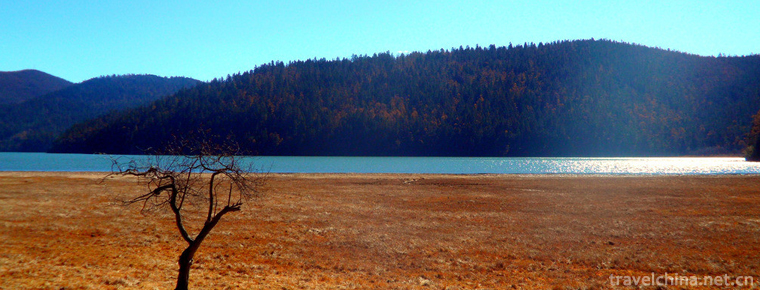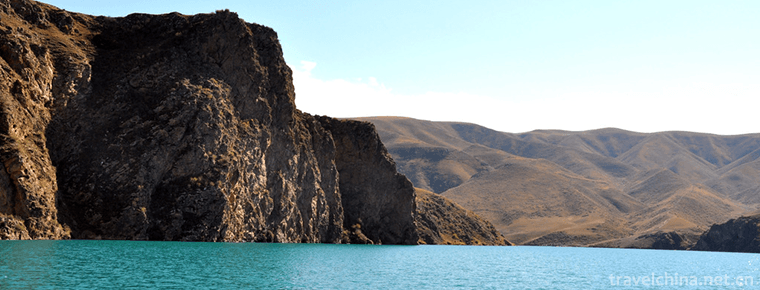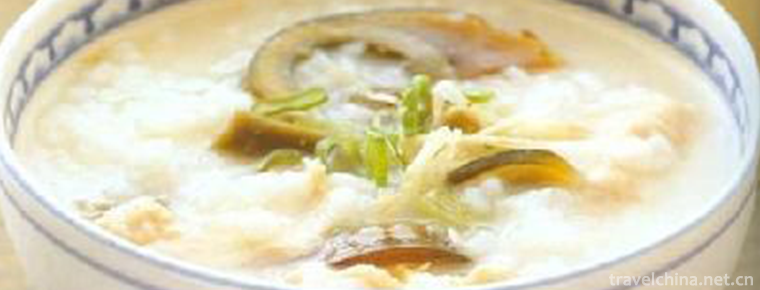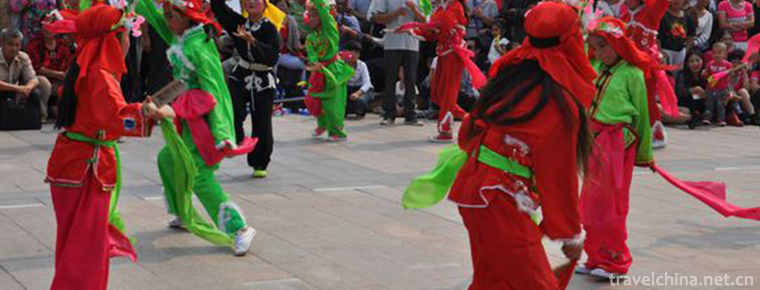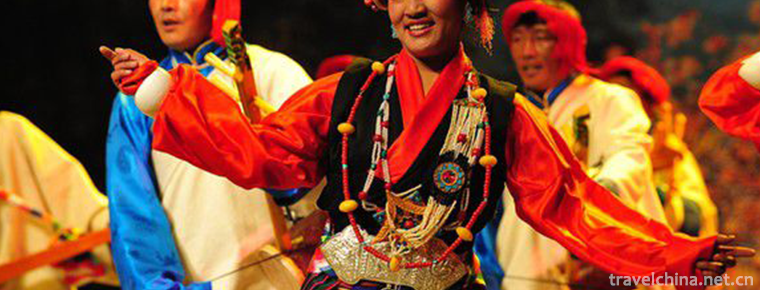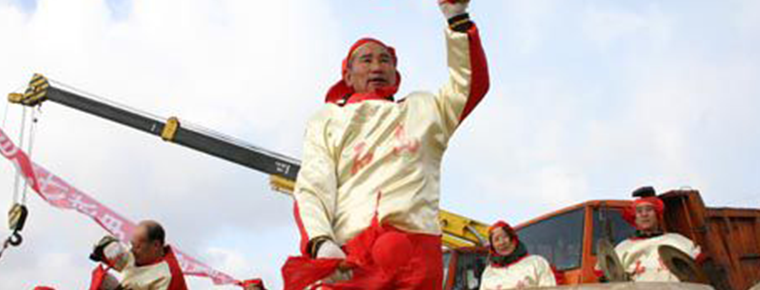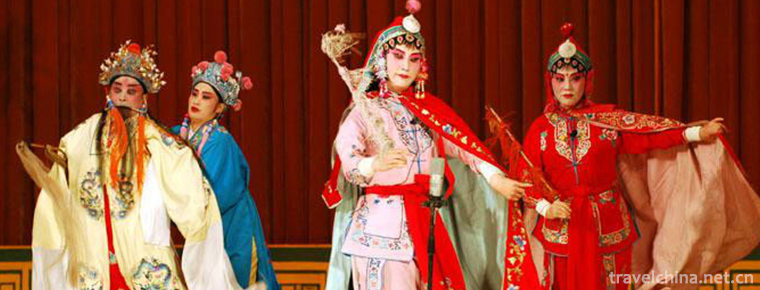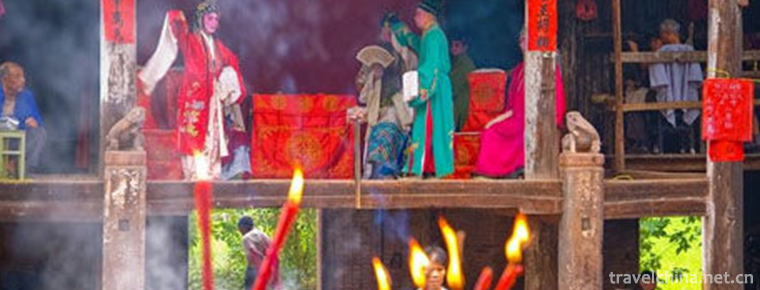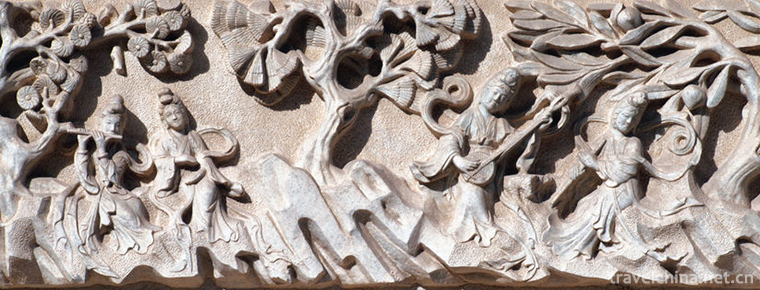The Great Wall of Water in Huanghua City
The Great Wall of Water in Huanghua City
Huanghua City Water Great Wall is located in Jiuduhe Town, Huairou District, Beijing, 65 kilometers away from Beijing City. It is a famous tourist and leisure resort, which integrates mountains, rivers and ancient Great Wall. And the "three great scenery" here is more fascinating and amazing.
The Great Wall built in Yongle of Ming Dynasty circled on the ridge and surrounded by Haoming Lake. The scenery was beautiful and magnificent.
"Erju" lake water will naturally disconnect the Great Wall, forming a unique landscape of the Great Wall.
The "three unique" chestnut garden in Ming Dynasty has different roots and shapes. The body of the dragon and the crown of the heavens are admirable.
Along ancient roads, wooden bridges, Brooks and rocks, the ascent can reach Heilongtan. On the way, Longwei Cave, Zicui Peak, Drunken Girl Mountain, Shilanggu Valley, Valentine Peak, Sanzhuliantan and other natural landscapes are more relaxing and delightful.
Main attractions
Ming the Great Wall
The Great Wall in the scenic area was built in the Ming Dynasty (1404), more than 600 years ago. After the founding of the capital of Beijing, the ancestors of Ming Dynasty set up their Mausoleums in the sun of Tianshou Mountain in Changping, and in the north of Tianshou Mountain in Huanghua Town. The Great Wall here not only guards the northern gate of the Beijing Normal University, but also is an important gateway to guard the "Thirteen Mausoleums" of the Imperial Mausoleum of Ming Dynasty.
Hao Ming Lake
Hao Minghu Lake is surrounded by mountains and has a wide range of water. It has a surface of 300 mu and an average depth of 8 meters. Fish play in the lake, ripples ripple on the lake surface; boating in the center of the lake for a rest, pleasant will be incisive.
Hang: The water is very strong. The lake is a page of scenic spot.
Ming: The combination of sun and moon refers to the universe in general. It means that everything is in the universe. Everything is given by nature. It clarifies the Taoist concept of eternity of all things, heaven and man as one, and at the same time indicates the beginning of the Great Wall in this scenic spot.
Lake: The characteristics of the waters: wide and calm.
The Great Wall in the water
The Great Wall in the water is due to dam closure, resulting in the rise of water level, submerging the Great Wall in the low valley in the water, forming a scene of the Great Wall splashing in water and submerging the ancient city walls, which is a unique scenic spot. The three sections of the Great Wall like Huanghua City are indeed unique in China. There are poetry clouds: the city embraces the Bibo Rim, the water does not have the ancient city wall; the city water echoes each other, magnificent and leisurely.
Peninsula
Located in the center of the scenic area, it covers an area of thousands of square meters. It is backed by green hills and surrounded by water on three sides. It is the best place to appreciate the Great Wall falling into the water. The island is full of green trees, flowers and grass, and has tourist recreation and rest centers such as cruise ship wharf, fishing place, tea house and so on.
Shek Lang Valley
This Valley is located in the middle of the scenic area. It is named Shilang Valley because of the impact of running water and rocks, which spray up layer upon layer.
Chestnut Garden in Ming Dynasty
The area of Chestnut Orchard in Ming Dynasty was over 100 mu, and there were more than 40 ancient trees. The ancient trees in the garden are intertwined and have different shapes. The body of the dragon playing pearls and the crown of the sky are full of praise. Ming Dynasty guard city officers three points guard the border, seven points cultivate, they worked hard to cultivate Daming chestnut, such a large area of chestnut garden, although weathered, but still deep roots and lush leaves. It is a unique human wonder in the suburbs of Beijing. Some poems praised that ancient chestnuts grew pale and grey on the slopes, but they were calm after the storms and hardships, and they were generous in offering fruitful grains and full of praise to the city.
Black Dragon Pool
Heilongtan is located in the west end of the scenic spot, surrounded by mountains on all sides, with clear water and quiet scenery. There are still song clear springs merging into the lake. In summer, it's very hot outside, but it's refreshing and pleasant inside.
There are poem clouds: a small abyss under the fallen rocks, the ancient streams gather into pools. Static waves are clear to the bottom and enjoy themselves by sitting on the shore.
Water curtain Gallery
There is a long corridor at the bottom of the dam of the scenic area reservoir. The corridor is winding and quiet, warm in winter and cool in summer. Especially in the rainy summer, the water level of Haoming Lake rises, water gushes from the five holes of the dam and falls into the pool below. The difference between the height and the height of the pool is nearly 20 meters, forming a spectacular artificial waterfall, and the corridor behind the waterfall becomes a longing'water curtain corridor'.
Three Zhu Lian Tan
The pool water is clear and bottomless. Like a few pearls scattered in the mountains and valleys. Formation of beautiful mountains and rivers, birds and flowers intoxicating landscape.
Practical information
Ticket information
- Adult tickets: 45 yuan per person
- Student tickets: 22 yuan per person
- Elderly people {need to carry geriatric syndrome}: 22 yuan per person
Opening Hours
8:00-16:30 (off season); 8:00-17:00 (peak season).
Traffic information
address
Xishuiyu, Jiuduhe Town, Huairou District, Beijing
Bus to go
Method 1
Take the 916 Express (Dongzhimen-Huairou Bus Station) at Beijing Dongzhimen Junction to reach the third district of Nanhua Garden. Transfer to Huairou-Shuichang Special Line (South-Shuichang at Yuyuan intersection) in situ. (20 minutes apart from departure)
Method two
Take 942 Express (Dongzhimen-Chawu Railway Station) outside Dongzhimen to Shanlizhuang, and transfer to Huairou-Shuichang Special Line (20 minutes interval) in situ.
Drive to
Method 1
From the city of Beijing, Anli Road all the way north, through Litang Road into Ansi Road, to Huaichang Road, turn right, then left, continue along Ansi Road, after crossing the Jiudu River, turn left at Donggong intersection, all the way along the sign into the scenic area.
Method two
From the exit of Kuanggou of Jingcheng Expressway, turn left at Kuanggou intersection and turn right at Qiaozi Dongkou. All the way along Huaichang Road, after crossing the Jiudu River, the same method is used.






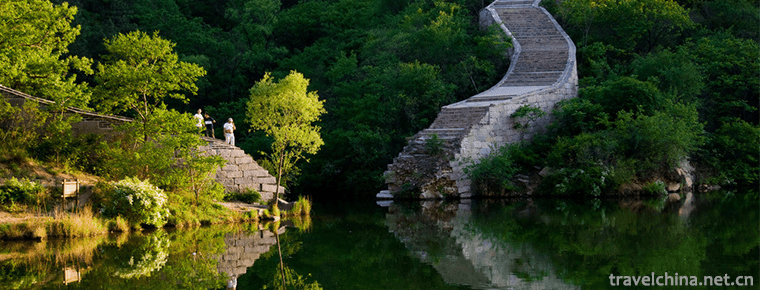
-
Pudacuo National Park
Pudacuo National Park, located in the center of the world natural....
Views: 173 Time 2018-10-18 -
Karajun Scenic Area
Karajun is Kazakh, meaning "the wilderness on the ridge". Karajun Mountain is a stretch of mountains from east to west. On both sides of it are hills with ravines and combs.
Views: 156 Time 2018-12-12 -
Yushui Ancient Hot Spring
Maoming Yushui Ancient Hot Spring, under the Yuyi Shishan Mountain, beside the ancient post road, hot springs are all over the place. The water is boiling all the time. Officials in counties and citie.
Views: 138 Time 2019-03-09 -
Eight treasures porridge
Babao porridge is a dish of Manchu and Han Dynasty. It tastes sweet and delicious and enjoys a high reputation..
Views: 222 Time 2019-03-26 -
Cangzhou Lazi
Cangzhou Laozi is a traditional folk dance with strong local characteristics in the central area of Hebei Province. Laozi is one of the representative folk dances in Hebei Province..
Views: 168 Time 2019-04-04 -
Definite day harmonics
Dingriluo Harmony Dingriluo Harmony, the second batch of national intangible cultural heritage list of the People's Republic of China. It is the main form of folk singing and dancing in Dingri County.
Views: 185 Time 2019-04-27 -
Jiaodong drum
Jiaodong Drum is a folk folk folk art form which originated in the coastal counties of Jiaodong Peninsula. It has a history of more than 260 years so far. It originated from the blind.
Views: 316 Time 2019-05-06 -
Mao Qiang
Maoqiang is a local opera popular in Weifang, Qingdao, Rizhao and other places. It was originally a folk humming tune called "Zhou Gu Tune". Legend has it that Maoqiang was named after a nun.
Views: 92 Time 2019-05-30 -
Qiyang Opera
Qi Opera is one of the traditional local dramas in Hunan Province. It is also called Qiyang Band, Qiyang Opera in the early years of the Republic of China, and Qiyang Qidong Opera in the folk.
Views: 95 Time 2019-06-10 -
stone carving
Stone carving refers to the use of various carvable and carvable stones to create a visible and touchable artistic image with a certain space, in order to reflect social life, express the artist's aes.
Views: 237 Time 2019-06-15 -
Meishan secondary industry
By the end of 2019, there were 596 Industrial Enterprises above Designated Size, and the added value of industries above designated size increased by 9.8%. In the whole year, 82 kinds of products from industries above Designated Size participated in the statistics,.
Views: 316 Time 2020-12-18 -
Animal resources in Yibin
There are nearly 1000 species of vertebrate resources in Yibin City. Among them, there are 70 species of mammals in 23 families; 306 species of birds in 16 orders, 46 families; 34 species of reptiles in 2 orders, 9 families; 29 species of amphibians; and 151 spe.
Views: 352 Time 2020-12-18
